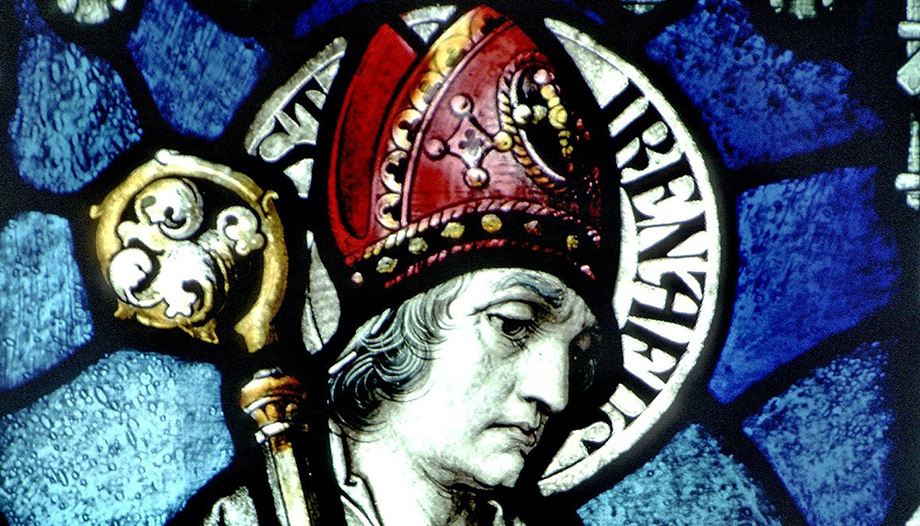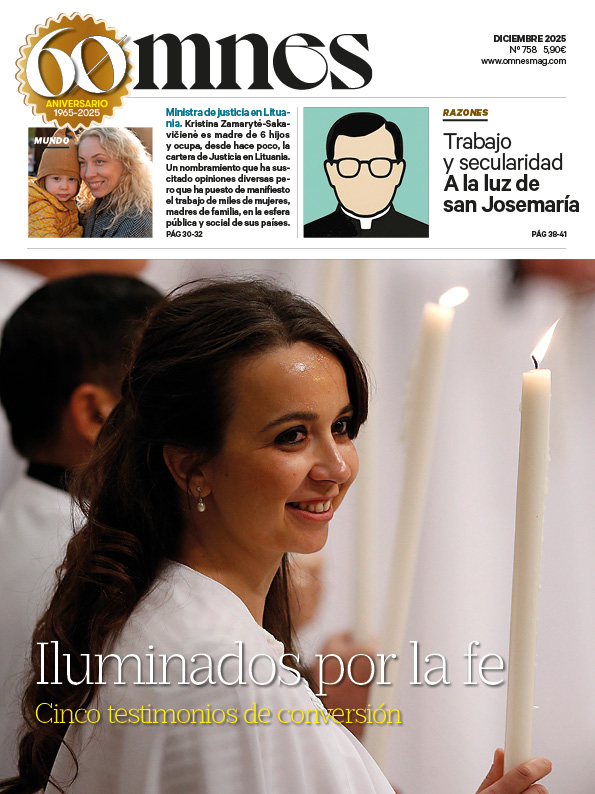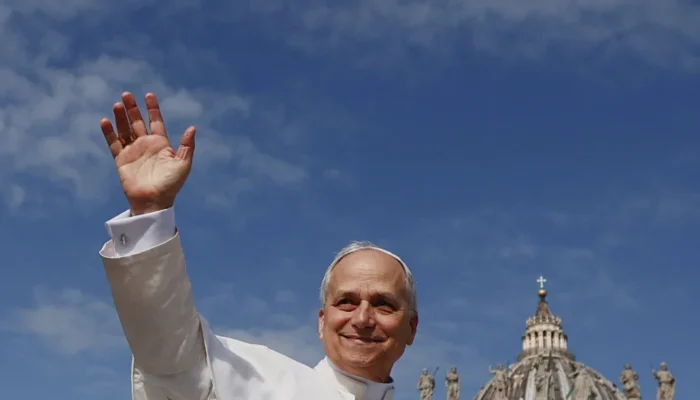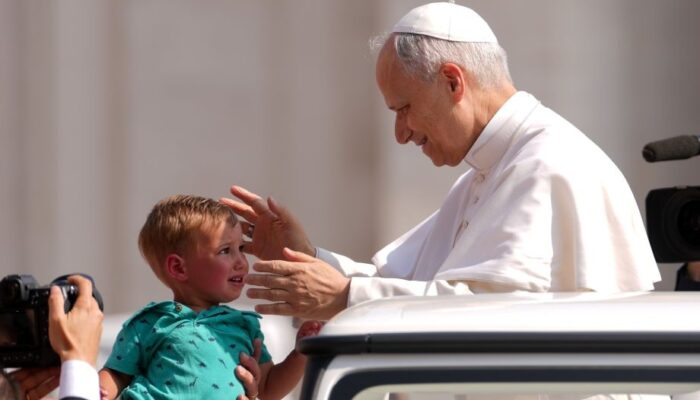St. Irenaeus was born in the East, in the thriving Christian communities of Asia Minor (perhaps in Smyrna, around the year 130). He was formed in the Asian tradition, which from the apostle St. John had known an intense development up to the brilliant work of St. Justin. But his pastoral work, at least the one we know today, was carried out in the West, as a priest and then bishop of Lyons, dedicating his apostolate to Gauls, Romans and Germans. We see again the rich diversity of the Church of the second century, in which a bishop of Asian culture could develop his ministry in Gaul.
We also note the intense mobility of Christians, who in this century were spreading the faith throughout the empire. In fact, St. Irenaeus traveled twice to Rome. As a priest, to take to Pope Eleutherius a letter from the martyrs of Vienne. As a bishop, to go to meet Pope Victor to defend the traditions of the Asian culture with respect to Easter, without losing full unity with the Church of Rome. We therefore understand his title as Doctor UnitatisUnity between the various Christian cultures and unity between the various communities and the Pope, who presides over that of Rome in charity.
By proclaiming him Doctor, the Church gives special recognition to his theological writings as qualified witnesses of the genuine apostolic doctrine. Only two of his works are complete. The most relevant, the monumental treatise entitled Against heresiesorganized in five books, which is the most important theological reflection of the entire second century and possibly of all Asian theology. As a complement, a small jewel entitled Demonstration of apostolic preachingwhere he expounds in depth the basic elements of the faith received from the apostles by tradition. Unfortunately, almost nothing remains of the rest of his work, and we do not even know with certainty how he died, although one tradition refers to him as a martyr in the great persecution of Septimius Severus, in 202.
Your interests
We already know that the Fathers of the Church did not write their works for the sake of publishing books or exposing their personal hobbies, but with a deep sense of mission in favor of the Church. We see this in the writings of St. Irenaeus, whose main objective is to foster and safeguard the faith of the simple, carefully explaining the apostolic doctrine and clearly and reasonably denouncing its deviations and manipulations. On the other hand, as his title of Doctor indicates, he always shows a serious interest in showing and promoting the unity of the Church in its admirable diversity of cultures: Germans, Celts, Gauls, Greeks, Romans and Asians share the same faith and the same Church.
Another great concern of St. Irenaeus is to expound and transmit what he himself has received by tradition. There are numerous references, explicit or implicit, to the teachers who preceded him: St. John, St. Ignatius, St. Polycarp, St. Papias and the presbyters of Asia or St. Justin. His extraordinary theological reflection has deep roots in Tradition, and at no time does he separate himself from it or adulterate it. He also receives from Tradition the canon of the Sacred Scriptures, particularly the Gospels. St. Irenaeus will speak of the gospel tetramorphthat is to say, of a single gospel shown in four forms: the four canonical gospels that we have today in the canon of inspired books. St. Irenaeus usually moves in the themes and doctrines marked by tradition, and in a language close to that of Scripture, although, paradoxically, his theological genius will allow him to do so with an expression so novel that even today it is remarkably current.
On Creation and humanity
An essential theme in the doctrine of St. Irenaeus is material creation, as the meeting point between God and humanity, and as a theological place despised by the Gnostics, who denied any value to matter as the result of an error in the divine world. However, humanity is created from matter, when God the Father molds with his hands (the Word and the Spirit) Adam, to whom he breathes the spirit of life. In this embodiment of Adam, St. Irenaeus sees the image of God in man, which refers to his spirit and his matter. From this original image, God unfolds the history of Creation as a process by which man, the image of God, increasingly acquires his likeness to Him, all within the framework of time and matter.
St. Irenaeus therefore teaches us that history, the becoming of the whole of Creation, is salvation history, the time God takes to complete the modeling of his creature to the perfection of his likeness. History is a economyThe plan of God to save man in his unity of flesh and spirit, a process moved in its various stages by the inspiration of a single Holy Spirit, is a plan designed by God to save man in his unity of flesh and spirit, a process moved in its various stages by the inspiration of a single Holy Spirit.
It is the Spirit who guides this process and who makes it known to those sent by God, both in the Old Testament (the prophets) and in the New Testament (the apostles). At the heart of this process is the Incarnation of the Word, the essential moment when God models the new and perfect Adam, Jesus Christ, who comes to recapitulate in himself all that is human, to liberate it and bring it to fulfillment.
The flesh of the Word
If the Gnostic teachings were based on speculations and theoretical mysteries to obtain through their knowledge the salvation of the spirit, the divine spark of man, St. Irenaeus will focus his teaching on the mysteries of the Word of God in human flesh, as the new Adam. Therefore he will speak of the liberation worked by the Incarnate Word on the Cross, not in the elaboration of an intellectual system of illumination, because in it culminates his act of obedience that cancels the disobedience of the first Adam and therefore redeems humanity from all the evils that that disobedience had brought him. Jesus Christ brings saved humanity to fullness by giving it with the Holy Spirit the perfect divine likeness, and by guiding it to the highest, to the vision and the encounter with the Father. As Isaiah had announced, Emmanuel (God with us), the Incarnate Word, would be a sign from the depths of the earth (the liberation obtained on the Cross) to the heights of Heaven (salvation understood as a participation in the mystery of the Ascension of the flesh of Christ to the right hand of the Father).
This magnificent vision of the history of humanity, of the saving work of Jesus Christ and of the true fullness of the human person (unity of matter and spirit) has its correspondence in the magnificent goal that will culminate this whole process. Starting from the teaching of his predecessors, St. Irenaeus will explain that history will lead to the Millennium prophesied by St. John in the Apocalypse. A Kingdom of a thousand years where the righteous will enjoy with Jesus Christ is a creation renewed and freed from all evil. A space of retribution and fulfillment, but above all, a final stage in the process of the shaping of humanity, where the flesh of the resurrected righteous will prepare to receive the vision of God. At the end of the millennium, the Heavenly Jerusalem will descend into this renewed Creation and humanity will enter into perfect unity and likeness in the vision of the Father.
At the construction site of the new Doctor UnitatisThus, we learn to see the unity of the various cultures in the one faith, of the various communities in the one Church, of the four Gospels in the one message of Jesus Christ, of the various stages of history in a single project, and of all of God's dispositions in a single economy salvific. Faced with the need for unity and harmony in the world in which we live, we discover in St. Irenaeus an ancient Doctor who, in our time, still has much to teach.
Doctor of Theology








